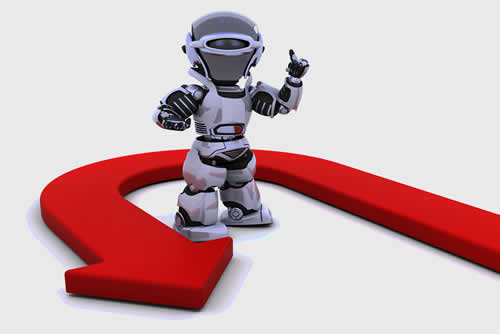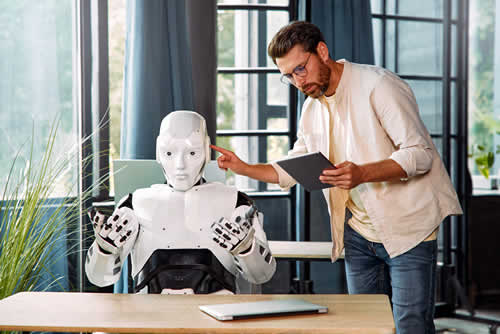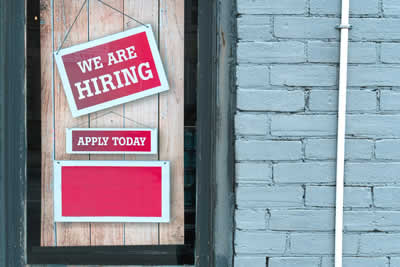Artificial Intelligence is rapidly reshaping the recruitment landscape as we know it - but how qualified is it for the job? AI can filter CVs and match people to job roles at scale, and in doing this, it’s paving the way toward a faster, more effective recruiting process. In today’s job market, it’s not uncommon to receive upwards of
500 applications for just one role and, In the past, weeding out unsuitable candidates to create a shortlist would take a huge number of man hours – enough to overwhelm anyone.

Advances in AI mean that CVs can now be scanned and analyzed for suitability quickly and efficiently; allowing roles to be filled faster and reducing job gaps and false starts.
Taking The Person Out Of Personnel
While there are many benefits to the use of automated recruitment, it’s important to take a breath and look at the big picture. As AI-driven recruitment becomes more entrenched, we may risk hiring bias as well as the possibility of human recruiters becoming, quite literally, redundant.
A recent industry webinar — Smart Hiring or Backfiring: Employing AI in Recruitment — assessed the opinions of four experts in HR, recruitment, and
AI governance to weigh up the pros and cons of automated hiring and, together, they shed light on where AI is genuinely adding value, where it still falls short, and why.
Can AI really do it better?
One of AI’s biggest strengths lies in its ability to sift through huge amounts of data with speed, consistency and accuracy when screening CVs and matching candidates with roles. This can help to select strong candidates more effectively while helping to reduce unconscious bias during the recruitment process.
One of AI’s biggest strengths is its ability to work through huge volumes of data at speed, with consistency and accuracy, So when it screens CVs, it can quickly match candidates with roles. This can help to select strong candidates more effectively while helping to reduce unconscious bias during the recruitment process.
As great as this is, it’s all about the quality of the data. In short, AI is only as good as the data that it’s given to work with. This means that if historical hiring data is imperfect or prejudiced, AI can - and does - inadvertently reproduce those issues.

Why people still have the upper hand
The thing is, while automation is fantastic at getting to work on repetitive, data-based tasks, your average algorithm very much lacks the human touch. Assessing emotional intelligence, gauging motivation, judging cultural fit and detecting hints of disingenuity are all things that only an actual human being can do.
Two can play at that game!
It may surprise you to learn that candidates are also cottoning on to AI for recruitment in order to tailor their applications to specific roles. In a highly competitive world, job seekers are looking to gain every advantage that they possibly can by using tools like ChatGPT to supersize their CVs and craft keyword-optimized cover letters. While some might argue that this is only fair, we may find ourselves in a peculiar position where AI is handling both the application and the recruitment processes.

When a two speed system puts the brakes on hiring
There are those who feel that as AI becomes more embedded in recruitment, the solution may lie in a
two-tiered hiring system, whereby AI handles the lower level or high-volume roles while the top brass are chosen by the humans.
Getting AI to work for you during the hiring process
If AI is to enhance recruitment - rather than hinder it - it needs to be introduced with a clear strategy and a strong ethical structure.

To do this, you need to start by identifying what it is you actually want to achieve, for example:
- A faster time-to-hire
- Better quality candidates
- More diverse shortlists
Once you’ve decided on your objective, you need to choose a system that aligns with it - and which will integrate smoothly with all the other tools that you already have in your box. If the tech is clunky or unintuitive - for recruiters, applicants or both - it’s unlikely to succeed; thereby causing a false economy as your recruitment will actually cost you more.
Transparency is just as important, because you need to be able to explain how your AI tools make decisions on candidate selection. Bias mitigation, built-in analytics, and regular monitoring and reviews are essential for fair, accountable hiring.
Questions You Should Ask Your AI Provider
Before committing to an AI provider, you need to prepare questions you should ask.

- How is bias mitigated?
What steps are taken to ensure the system isn’t reproducing harmful or inaccurate patterns?
- How is candidate data protected?
You’re dealing with sensitive information—how is it kept safe?
- How is the system monitored over time?
By its very nature AI is designed to evolve. This means that any provider should be able to show how they track performance, flag up any issues, and adapt or refine their models when it's necessary.
What Does The Future Look like?
As we’ve shown in this article, when it comes to recruitment, it’s important to choose the right man - or machine - for the job. Like any other kind of tech, AI should be seen as a tool which helps to speed up the process by taking over the faffy repetitive data-driven tasks.
As such, the sweet spot is achieved when human recruiters and AI work hand-in-hand (or hand in neural network) for the best possible results. This creates a partnership whereby AI takes the heavy lifting out of tasks like streamlining admin and improving consistency while the humans do what they do best - choosing people whose hard and soft skills will enrich the business.

If you'd like to learn more about what we provide, why not take a look at how we can help?
Boost your skills with our market-leading online courses at super-low prices.






























